Introduction
The insurance industry is on the brink of a transformative era, driven by the integration of artificial intelligence (AI) into claims management. This revolution is not merely about increasing efficiency but also about enhancing accuracy and customer satisfaction. With AI automating repetitive tasks and reducing processing times, insurers like Aflac and Allstate are experiencing faster claim settlements and higher data integrity.
AI’s capabilities extend beyond automation; it engages customers in real-time through sophisticated chatbots and leverages advanced analytics for fraud detection and prevention. However, the path to successful AI implementation is fraught with challenges, including data privacy concerns and the integration of legacy systems. As the industry navigates these complexities, the potential benefits—optimized resource allocation, improved customer service, and minimized human error—are undeniable.
This article delves into the myriad ways AI is reshaping claims processing, from practical applications and fraud prevention to future trends and implementation strategies, offering a comprehensive guide for insurance professionals seeking to harness AI’s full potential.
Benefits of AI in Claims Management
‘The incorporation of AI technologies into management processes is transforming the insurance sector by improving efficiency and precision.’. Automating repetitive tasks significantly reduces processing times, thereby enabling quicker settlement of requests. For instance, Aflac’s partnership with service providers has drastically transformed their request process. Previously, representatives had to manually review each request and form, leading to prolonged processing times. Now, automation allows representatives to perform final accuracy checks, saving considerable time and effort.
AI’s capability to reduce human mistakes guarantees greater information integrity and reliability. As Don Jones, Senior Vice President of Claims Design and Delivery at Allstate, points out, AI can analyze claims trends and data, supporting informed, data-driven decisions. This is especially clear in the management of the first notice of loss (FNOL), where AI can simplify the procedure, making it easier for customers and ensuring precise information transmission.
Moreover, AI enhances customer engagement by providing real-time updates and insights to policyholders through AI-driven chatbots. These systems employ Natural Language Processing (NLP) to comprehend and handle natural language input, enabling more intuitive interactions. This not only improves customer service but also fosters trust and satisfaction among policyholders. As Shawn Crawley, Chief Operating Officer at Sompo International, explains, Ai’s examination of information can identify the seriousness of claims, potential legal action, or fraud, further enhancing the claims management system.
The advantages of AI in risk management are becoming more evident as providers allocate additional resources to AI technologies to enhance customer service and handle the intricate information environment. Despite being in its early stages, the adoption of AI requires experimentation, training, and new operational models. However, the long-term advantages, such as optimized resource allocation and more efficient processes, are undeniable.
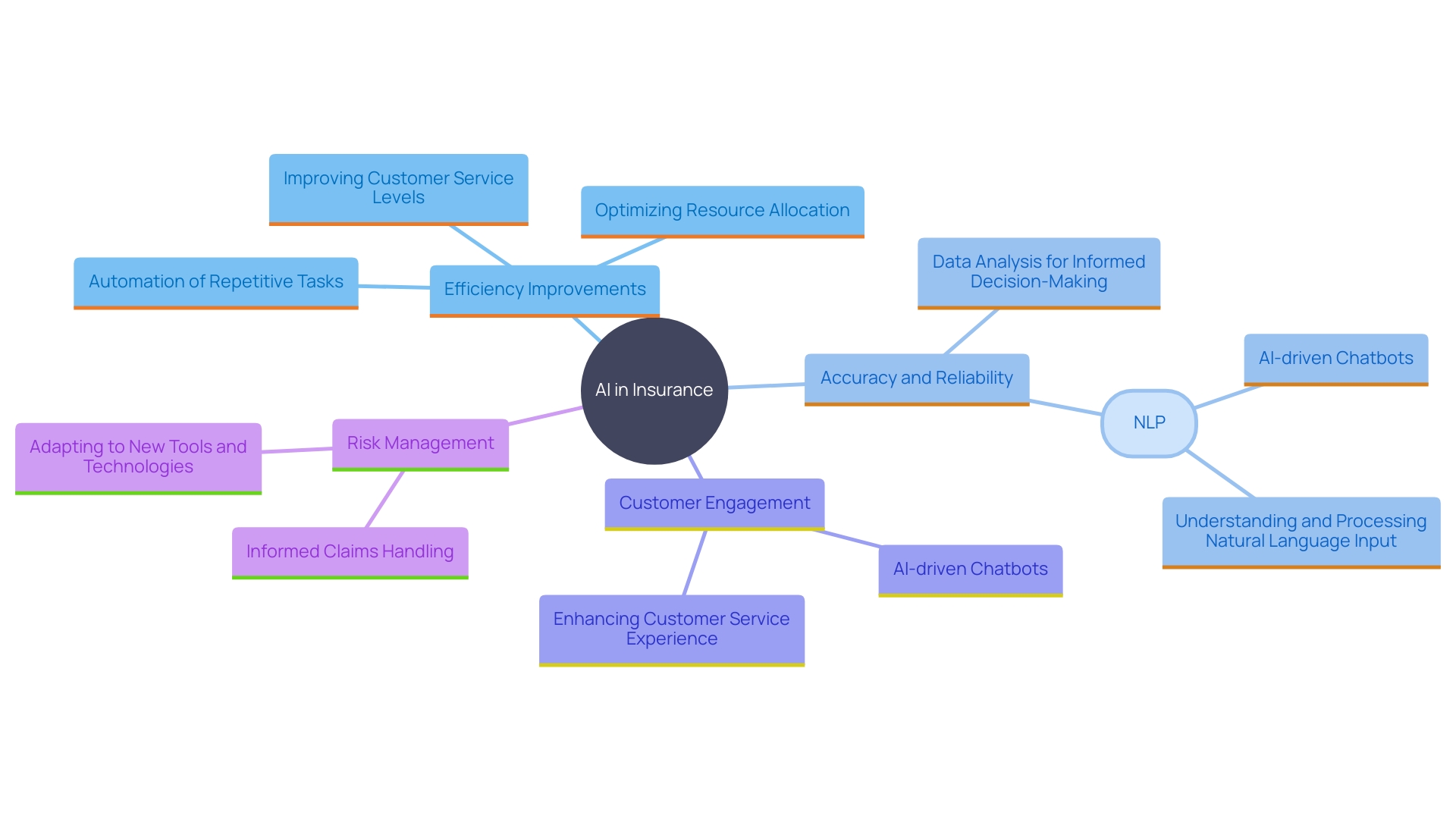
AI Applications in Claims Processing
AI applications in processing requests are revolutionizing the insurance industry by tackling the persistent challenge of managing vast amounts of data. Through natural language processing (NLP), insurers can evaluate submissions more efficiently, enabling more precise and pertinent responses to customer inquiries. Machine learning algorithms further improve this method by forecasting outcomes, which assists in making more informed choices. Image recognition technologies are also crucial, enabling the evaluation of damages through photographs, thus accelerating the process and minimizing manual intervention.
These AI-driven tools revolutionize the management environment by automating information extraction, categorizing requests, and prioritizing them according to complexity or risk. This automation not only improves operational efficiency but also enhances customer service levels by ensuring claims are handled promptly. As Wilde and Dhar have highlighted, the adoption of AI and machine learning offers a solution to the difficulties insurers face with mixed structured and unstructured data, providing ways to manage and process this complex information more effectively.
Furthermore, the sector’s investment in AI technologies keeps expanding, motivated by the necessity to enhance customer service and adjust to the rising complexity and competition in the market. By addressing various phases of the risk management process—such as risk exposure identification, evaluation, estimation, and effect assessment—AI assists firms in achieving a balance between swift, empathetic resolution and protection against fraud and litigation risks.
‘In light of recent regulatory updates, such as New York State’s new guidelines on AI usage in the financial sector, it is clear that while AI offers transformative potential, it must be deployed with clear rules to ensure sustainable digital transformation.’. This regulatory environment emphasizes the significance of using AI responsibly to avoid unjust settlement practices and discrimination, thus maintaining trust and transparency in the insurance industry.
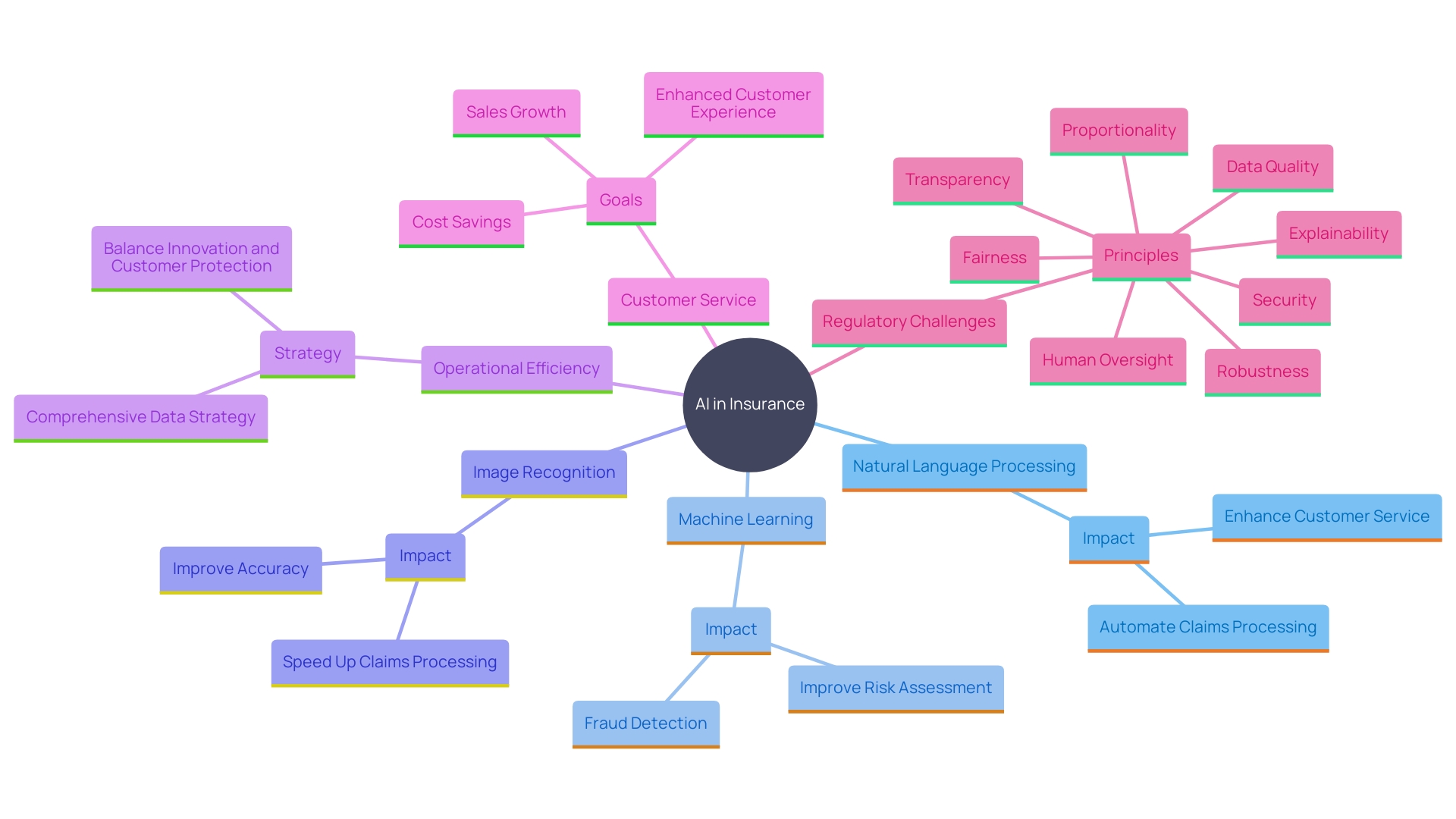
Fraud Detection and Prevention
Artificial intelligence is revolutionizing the way insurers identify and mitigate fraudulent claims. Leveraging advanced analytics and pattern recognition, insurers can now detect anomalies and suspicious activities with unprecedented accuracy. ‘This shift is essential as traditional methods, which depended largely on manual tasks and basic rule-based systems, have become increasingly insufficient against advanced fraudulent activities.’.
AI’s capability to examine extensive quantities of information instantly is changing fraud detection into a more streamlined and impactful operation. Machine learning models continuously evolve, learning from past data to enhance their predictive capabilities. ‘This not only enables immediate fraud identification but also assists in stopping fraud before it happens, thus conserving insurers significant financial resources and protecting the integrity of the claims framework.’.
For instance, companies that have incorporated AI into their operations have reported significant improvements in various metrics. According to Capgemini, insurers using AI have achieved faster processing times, reduced expenses, and better fraud detection rates compared to their counterparts. This is particularly relevant as underwriters, who spend over 41% of their time on administrative tasks, can now redirect their efforts towards core responsibilities like risk assessment and premium calculation.
The demand for AI in fraud detection is on the rise globally, driven by the need for real-time detection, regulatory compliance, and the expectation of a seamless customer experience. As the insurance industry continues to navigate this digital era, AI stands as a pivotal tool in enhancing operational efficiency and maintaining financial stability.
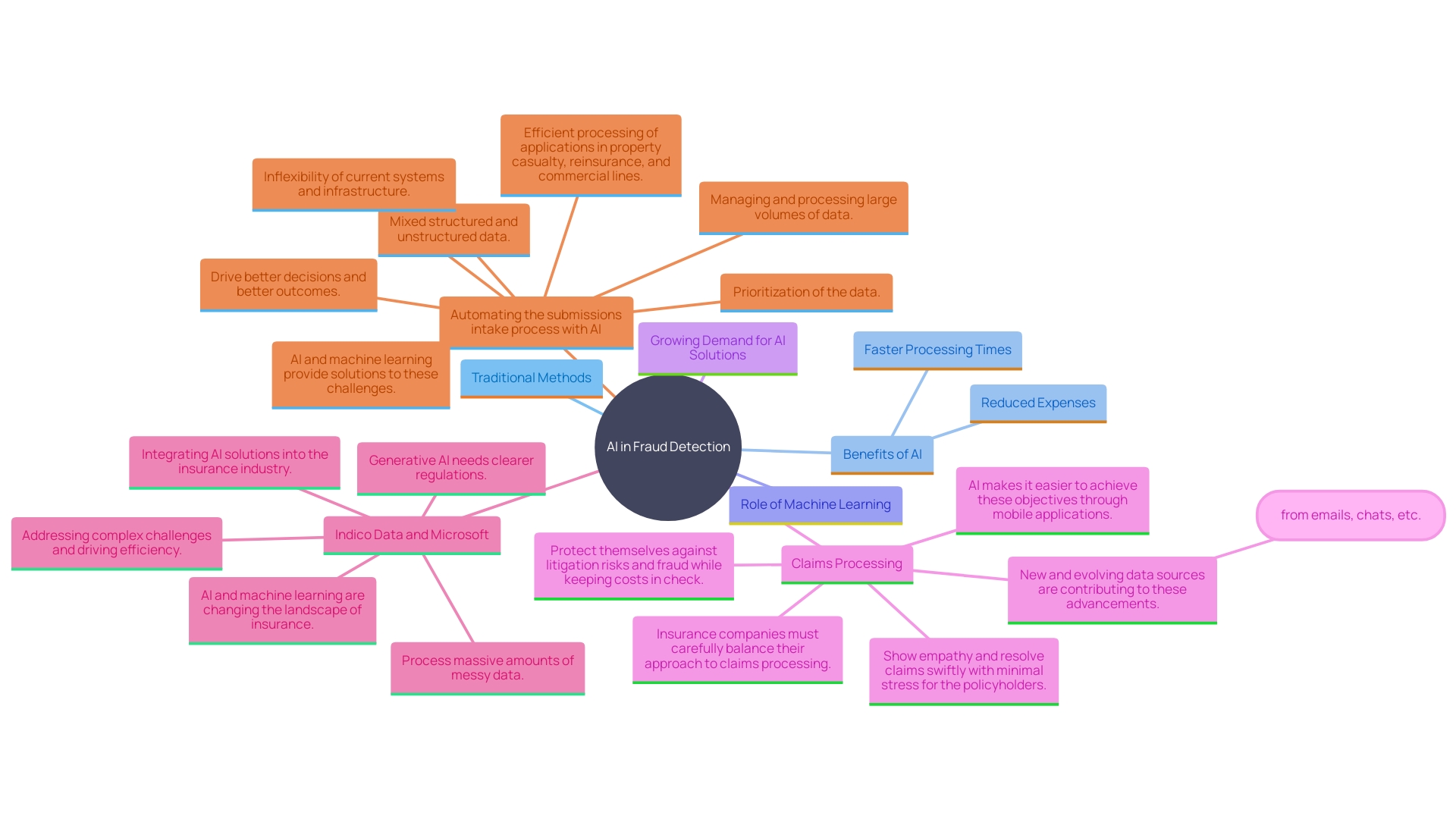
Implementation Strategies for AI in Claims Processing
Effective execution of AI in processing requests necessitates a clear plan that starts with a comprehensive evaluation of existing procedures and the identification of particular challenges that AI can resolve. This step is crucial for ensuring that the AI solutions selected are tailored to the organization’s unique challenges, much like the Digital Technology Assessment Checklist (DTAC) used to evaluate new technologies. Working together with IT and analytics groups is crucial to guarantee that the AI tools selected are both efficient and adhere to industry standards, such as those specified by New York’s Department of Financial Services to avoid the improper use of AI in processing requests.
Continuous training and change management efforts are equally vital. Ensuring staff are well-versed in new technologies not only facilitates a smoother transition but also maximizes the benefits of AI. As Rasheed Walker, an apprentice at Sedgwick, notes, integrating AI into early career programs and fostering an environment of continuous improvement can lead to significant efficiency gains and innovation. Furthermore, Ai’s role in handling substantial amounts of varied information, as emphasized by industry specialists Wilde and Dhar, highlights its potential to enhance decisions and results in claims processing.
Ultimately, the harmonized collaboration between people, AI, and automation within a connected enterprise ecosystem is key to accelerating transformative growth in the insurance industry. This approach empowers employees, enhances customer service, and continually raises industry benchmarks.
Challenges and Limitations of AI in Claims Processing
While AI presents numerous opportunities, there are also challenges to consider. Data privacy and security concerns must be addressed to comply with regulations and protect customer information. For example, Retail Bank partnered with a synthetic information provider to reduce risks when testing AI solutions, adhering to the information minimization principle and decreasing security threats. Additionally, the complexity of integrating AI with legacy systems can pose significant hurdles. Traditional insurers often struggle with the inflexibility of their existing infrastructure, which can hinder the efficient processing of applications and data. AI can streamline this process, but it’s crucial to ensure that the technology is compatible with current systems.
Organizations must also be aware of the potential for bias in AI algorithms, necessitating ongoing monitoring and adjustments to ensure fair outcomes. The recent case of UnitedHealthcare’s alleged misuse of AI to deny critical health coverage underscores the importance of ethical AI deployment. To prevent such issues, continuous oversight and adherence to regulatory guidelines, like those set forth by New York’s Department of Financial Services, are essential. These measures help safeguard against unfair practices and ensure that AI technologies are used responsibly and effectively in the sector.
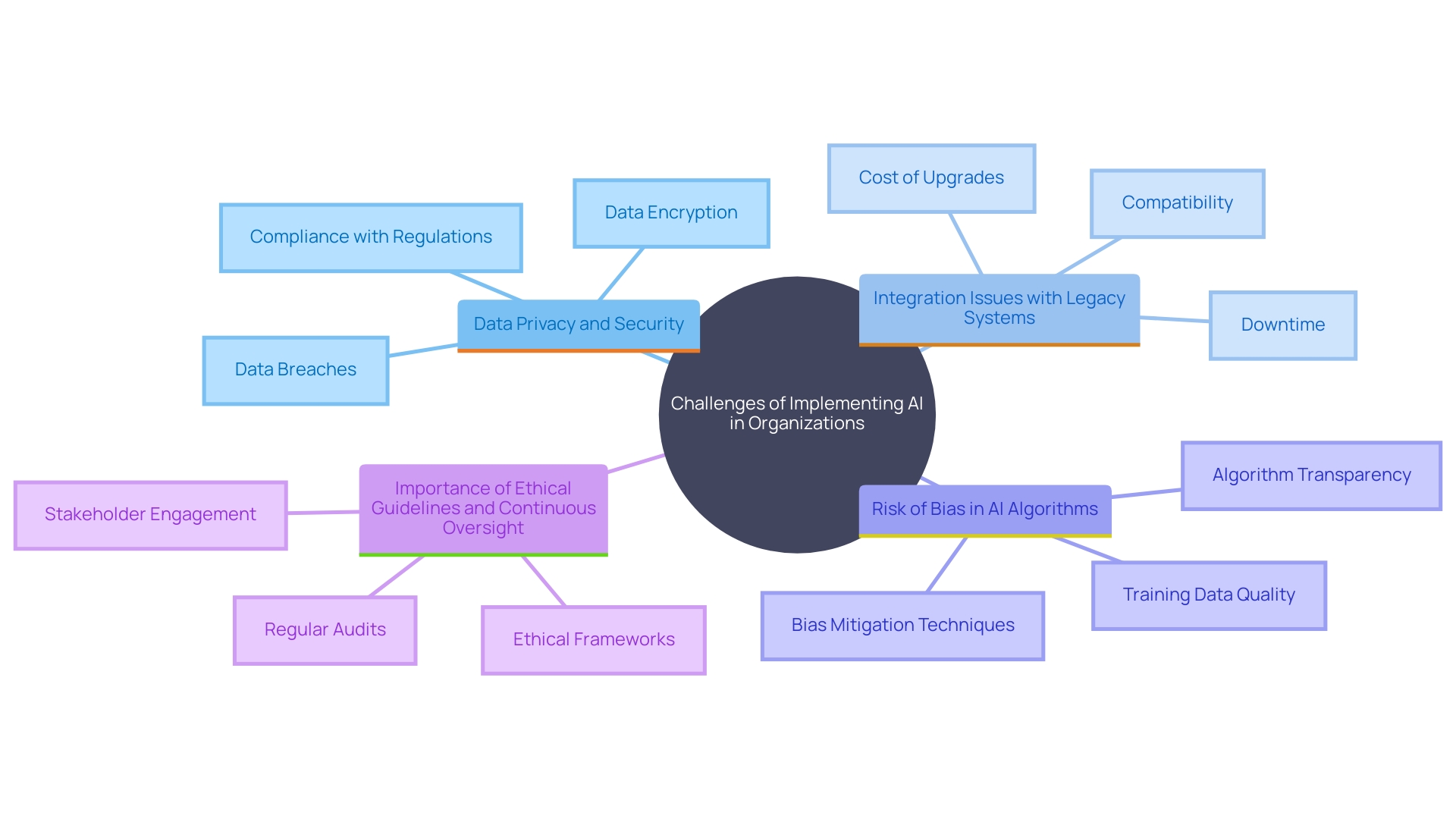
Future Trends and Opportunities
The future of AI in insurance processing is incredibly promising, marked by significant advancements in technology and methodology. Generative AI, a branch of artificial intelligence, is poised to transform the industry by improving the customer experience and speeding up the resolution. For example, during the initial Notice of Loss intake, generative AI can enhance the evaluation of policy coverage, extract essential information, and identify knowledge gaps, making the procedure more efficient and precise.
The combination of AI with blockchain technology further improves transparency and security in processing requests. Blockchain’s unchangeable ledger offers a reliable account of all exchanges, which, when paired with Ai’s analytical abilities, guarantees a more secure and efficient processing system. This technological synergy not only speeds up transactions but also builds greater trust with policyholders.
Additionally, predictive analytics driven by AI will become more widespread, allowing insurers to anticipate trends in requests and modify their strategies in advance. By examining extensive information sets, AI can recognize trends and forecast future requests, enabling insurers to reduce risks and enhance their operations.
The sector is already witnessing a surge in demand for data-driven decision-making, with advanced analytics tools empowering providers to extract valuable insights from their data repositories. This capability enhances underwriting accuracy, improves risk management, and reduces fraud, ultimately leading to better profitability and customer satisfaction.
Insurers must balance innovation with regulatory compliance and customer protection. As noted in recent industry reports, the adoption of AI requires careful consideration of principles such as transparency, fairness, and human oversight to ensure ethical and responsible implementation.
In summary, the integration of AI and blockchain, coupled with the rise of predictive analytics, is set to transform the insurance claims process, making it more efficient, transparent, and customer-centric.
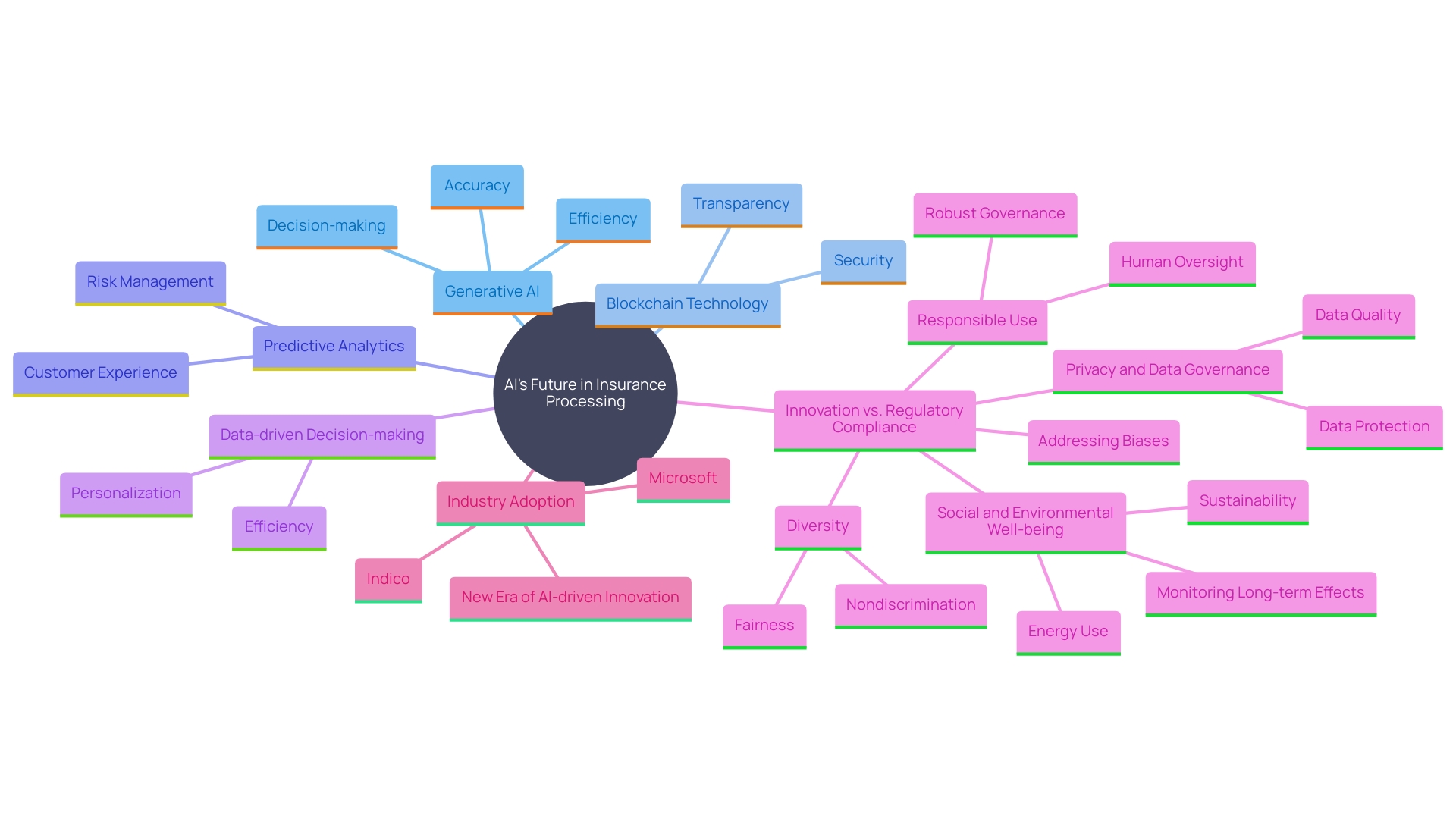
Conclusion
The integration of artificial intelligence in claims management is revolutionizing the insurance industry by enhancing efficiency, accuracy, and customer satisfaction. Insurers like Aflac and Allstate are harnessing AI to automate repetitive tasks, which significantly reduces processing times and improves data integrity. This transformation not only accelerates claims settlements but also fosters real-time engagement with customers.
AI technologies, such as natural language processing and image recognition, streamline data management, allowing for quicker damage assessments and more accurate claim predictions. Moreover, AI is pivotal in fraud detection, enabling insurers to identify suspicious activities and prevent fraudulent claims effectively.
Despite these advancements, challenges remain. Organizations must address data privacy concerns, potential algorithm biases, and compatibility issues with legacy systems. Ongoing training and change management are crucial for maximizing the benefits of AI.
The future of AI in claims processing holds great promise, with innovations like generative AI and blockchain enhancing security and transparency. Insurers must balance these technological advancements with ethical considerations to maintain trust and ensure responsible implementation.
In conclusion, the potential of AI in claims management is substantial. By strategically investing in AI technologies, insurers can create a more efficient and customer-centric claims process, ultimately leading to improved service delivery and satisfaction. Embracing AI responsibly is essential for unlocking its full potential for all stakeholders involved.

